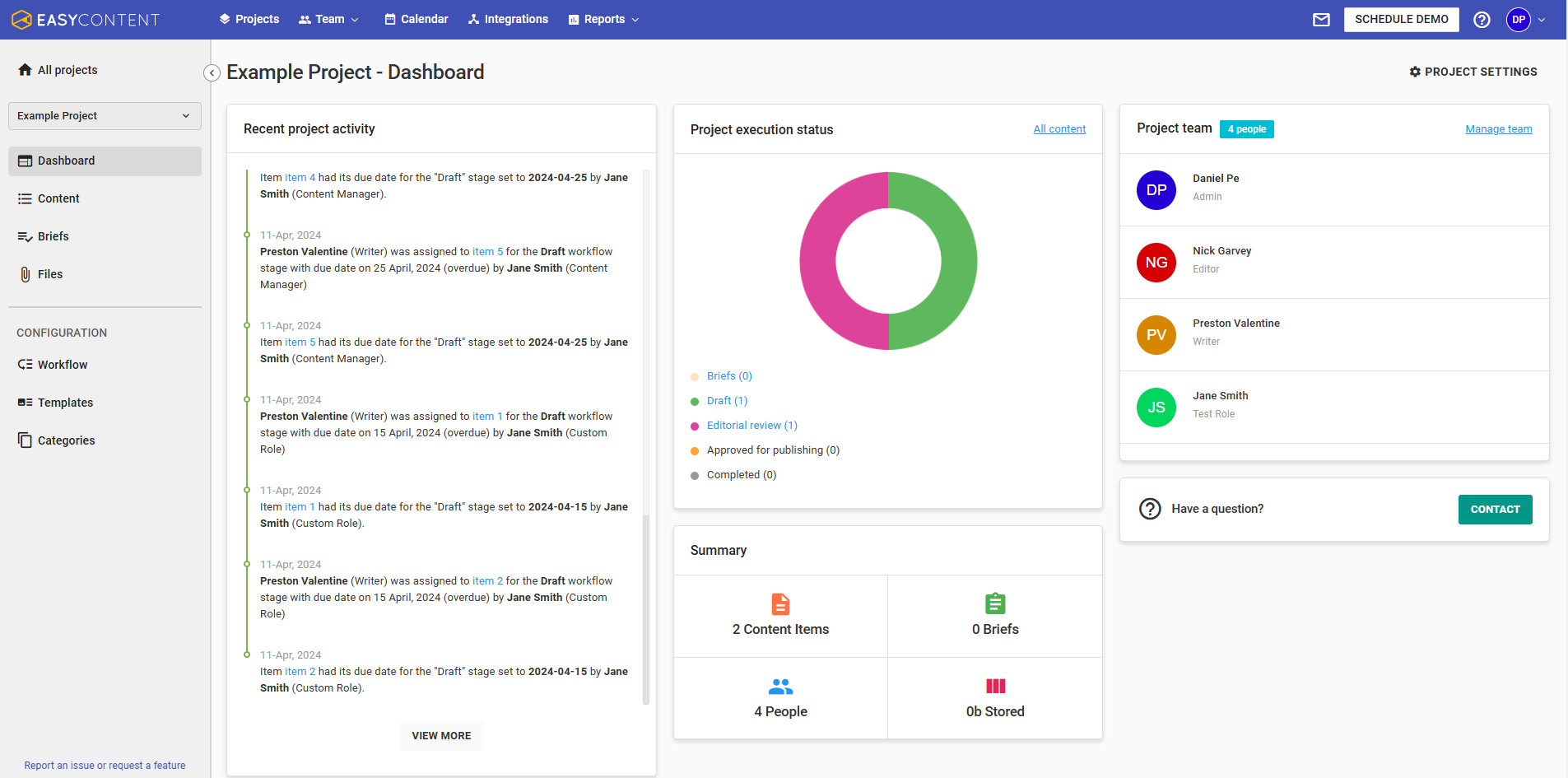Understanding the Importance of Content Operations
Content operations can significantly improve the pace at which teams produce content. Learn more about the importance of content operations and how it benefits your team.

Content creation is crucial for businesses nowadays. It's one of the most important tools they can use to reach their target audience. It significantly increases their chances of success.

Because of this, businesses are producing a lot of content. They pump out as much content as humanly possible to rank in search engines or to show that they are a reputable and knowledgeable business that their customers can trust.
However, churning out a lot of content as fast as possible is very hard to do. It can be chaotic. It can be a headache. It's costly. It's time-consuming. But if you have content operations in place, everything becomes much more smoother and simpler.
What is Content Operations?
Content operations is a systematic approach to creating content. It helps businesses create, publish, and manage content more efficiently and effectively. It can be thought of as a framework that brings together three key elements: people, processes, and technology.
Content operations complements your content strategy.
Content strategy defines the type of content you need to create and content operations define how you'll execute it. It focuses on setting up the systems, workflows, and tools that will enable your team to produce high-quality content consistently and at scale.
Services like EasyContent are a content operations platform. It has the tools you need to implement the systems and workflows that you need for content strategy. You can use it to shape and bring your content operations to life.
The Three Elements of Content Operations
Content operations consist of three key elements: people, processes, and technology. Each of them plays a crucial role in creating effective and efficient content ops.
People
People are at the heart of content operations. This includes writers, designers, editors, managers, etc.
Each person must have a role to play in creating and managing content. Your team should know who does what and when they should do it.
When they understand what they need to do and when, your content creation process goes along smoothly and effectively. This reduces the time it takes for your content to get published.
You also want to ensure that there's good communication between roles. This makes sure everyone is on the same page to avoid confusion and errors.
Processes
Processes are the steps followed to create content. It's about setting up clear workflows, guides, and templates. This will help ensure that your content is consistent in style, tone, and voice.
If your content is inconsistent, it will reduce your audience's trust in your business. If the quality greatly varies from one content to another, do you really know your industry? A well-defined process will help ensure consistency and maintain quality.

In EasyContent, you can create a set of workflow stages that looks like this: draft > editorial review > approved for publishing > completed. It's a clear definition of the process of how content is created, from draft to finish. You can also create templates with guidelines to keep your content's structure and quality consistent no matter how many different writers you have in your team.
Technology
Technology refers to the tools and platforms that support your content operations. These are the things that help you write your content, keep track of deadlines, manage tasks, manage your team, etc.
Some examples are content management systems that help organize and publish content, project management software like Trello to keep track of tasks and deadlines or an all-in-one content operations platform like EasyContent.
You may be using multiple technologies for your content operations. You may have an editorial calendar app to track deadlines. Then you may have a project management tool to assign people to tasks. These can work but sometimes they cause more issues than solving them.
Consider getting a good content operations platform like EasyContent. It's a platform that helps you manage your people and processes in one single place. There's no need to switch between different programs and websites.
Why Content Operations is Important?
Implementing content operations offers a ton of benefits. You will save time, money, and resources while still improving quality and increasing the speed at which you can churn out content.
Increased Efficiency
With a streamlined process and the right tools, you can create content faster while saving resources. It will lead to significant cost savings while allowing you to output more content without needing to expand your team.
For example, a well-defined workflow can reduce the time spent on administrative tasks, allowing writers to focus more on actual content creation instead of waiting for approvals or assignments.
With proper roles and responsibilities, everyone knows what to do and when to do it. It reduces waiting. It reduces asking. Both are huge time savers.
Save Time and Money
Efficiency saves time and money. When your team is efficient, there's less need for a back-and-forth. When there's less back-and-forth, it reduces the time it takes for content to get published.
Ultimately, you save a lot of time and money when there's an effective content operations in place.
Better Quality
When there is a clear definition of roles and responsibilities along with a well-defined structure for content workflow, quality is significantly improved. Errors are caught before content goes live. This ensures that your content is always high quality, which will attract and retain your target audience.
Improved Teamwork
With content operations in place, your team will work together more seamlessly and with less friction. Because everyone knows what their role is and what they need to do, the "your fault" scenario will happen far less often. Collaboration becomes much smoother when everyone knows what their responsibilities are and how they fit into the bigger picture.
Faster Content Output
By implementing workflows, content will go smoothly from ideation to publication. This will result in faster content output. And it's vital in today's digital landscape because being able to produce quality content earlier than your competitors gives you an edge over them.
In addition, when everyone knows what needs to be done, waiting is eliminated. For example, in EasyContent, you can set up default assignees that automatically get assigned to a content item whenever it reaches a workflow stage. Then, affected users will get email notifications about content items that need their input, helping to make sure they're up to date with what needs to be done.
Ensure Consistency
With content operations, you can ensure that your content follows a set of standards that keeps your content's quality consistent. Consistency helps build your audience's trust and confidence in your business, and it establishes your brand identity. When your tone, style, and quality are consistent, your audience knows that you know what you're talking about. It also helps them build a connection with your brand.
For example, in EasyContent, you can create templates with guidelines to help ensure that your content is consistent in structure and quality.
Ensure Compliance
If you produce content that falls under the "Your Money, Your Life (YMYL)" category, then you need to make sure that your content adheres to legal and regulatory requirements. Good content operations include checks to ensure all content is compliant with these rules. This reduces the risk of legal issues and ensures your content is accessible and appropriate for all audiences. Regular training and updates on compliance standards keep your team informed and your content safe.
EasyContent: A Content Operations Platform
If you don't have content operations in place or are looking to improve your current content operations, EasyContent can help you!

We are an all-in-one solution for your content operations needs. We are the technology that will help you manage your people and implement your processes smoothly and efficiently.
- Create user roles and give them different a set of permissions. This will help you manage the people in your team. You can give them roles and permissions to make sure that they can only access the things that they need so they can hyperfocus on their tasks.
- Create workflows. You can create workflows and assign users roles that will be responsible for these workflows. When content reaches a specific workflow stage, users with the role you've defined as responsible for a workflow stage can start working on it. You can even add default assignees that will be automatically assigned to the item to reduce micromanagement.
- Create templates. Create templates that define how your content is structured. You can add guidelines and notes for your team so that they follow a consistent style, tone, or voice.
- Improve teamwork. EasyContent comes with comments, messages, and a feedback system to foster collaboration and teamwork.
- Collect ideas. You can create briefs that can later be turned into content. Anyone who has permission can grab a brief and start working on it.
- Manage deadlines. You can set auto deadlines per workflow stage. This will ensure that content gets created and signed off on time.
- Manage your editorial calendar. Use our editorial calendar to create new content, adjust deadlines, assign people, or simply view your entire publishing schedule at a glance.
- Manage your assets. Upload and manage your assets right in EasyContent.
Conclusion
Content operations is about managing people, processes, and technology to create and manage content efficiently. It improves efficiency, saves time and money, enhances quality, and boosts teamwork. This leads to faster output, consistency, and compliance. In short, good content operations make everything run smoothly, ensuring your content strategy is successful.





